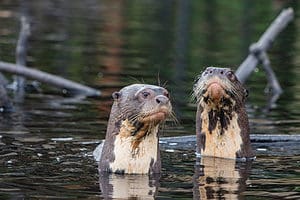Otters are any of 13 living species in the Lutrinae subfamily of mammals. As all otters are either semi-aquatic or fully aquatic, they are excellent swimmers with long hydrodynamic bodies and webbed feet. Otters are predators of fish, shellfish, and other aquatic creatures. They are also known for their playful nature!
Male otters are called either boars or dogs, while female otters are called either sows or bitches; their babies are called cubs or pups. Unlike some other mammals like lions and elephant seals, where there are obvious and dramatic visual differences between the sexes (sexual dimorphism), it can be difficult to tell male and female otters apart at first sight. For each otter species, both juvenile and adult male and female otters have the same color and pattern of fur. However, there are at least a few other visible clues that can help. Read on to learn about four key differences in male vs female otters to look for!
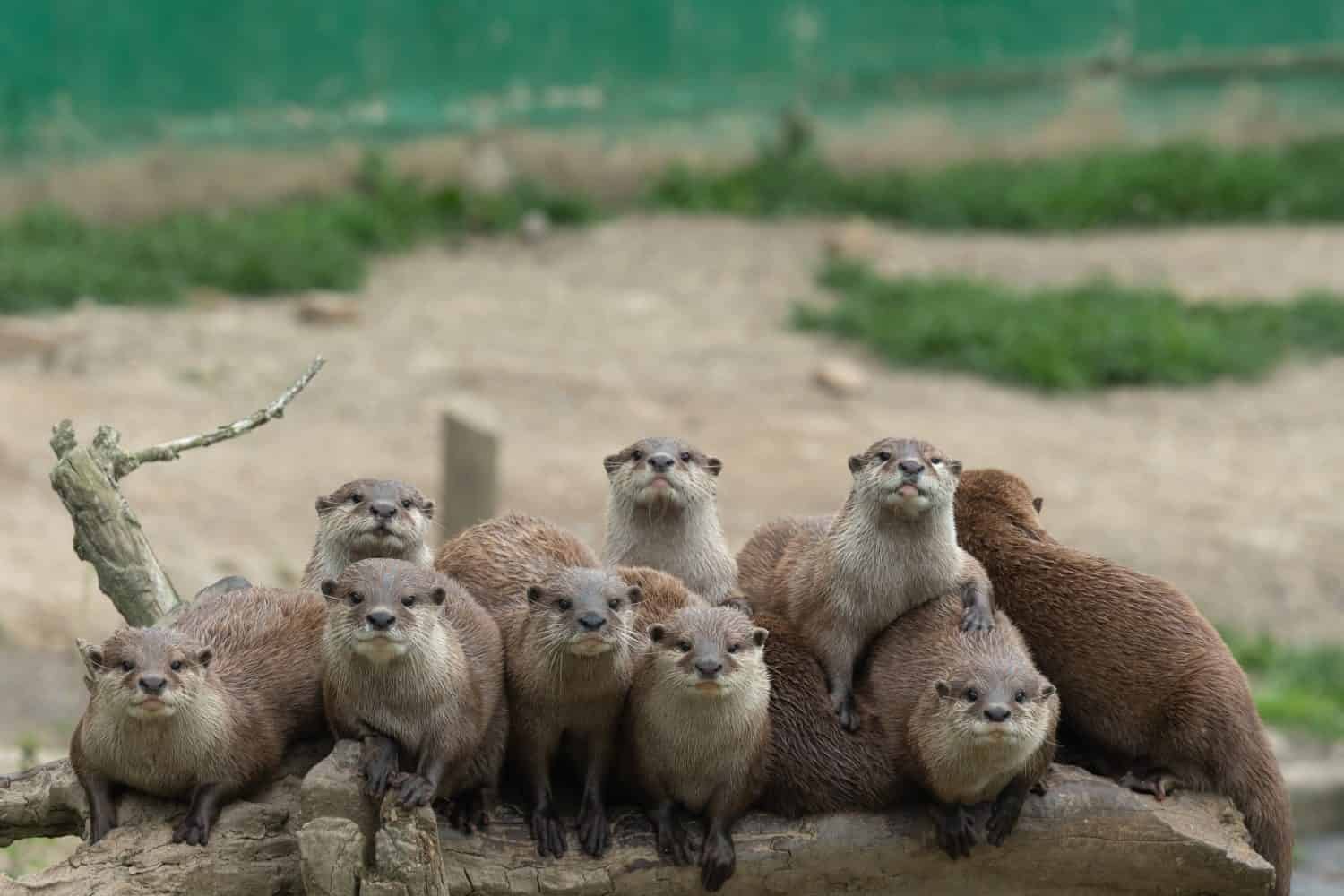
When it comes to otters, it can be hard to tell males and females apart because of their nearly identical outer appearances.
©Tom Meaker/Shutterstock.com
1. Size: Length and Weight

The Neotropical otter (
Lontra longicaudis) is an otter species in which the adult males are on average 20 – 25% larger than the females.
©Holger Metzger/Shutterstock.com
In nearly all otter species, adult males are a bit longer and heavier on average than adult females. However, individuals of either sex can be bigger or smaller than these statistical averages, so it is not guaranteed that the male will always be larger than the female in any given pairing.
2. Visible Reproductive Equipment: Teats and Testes
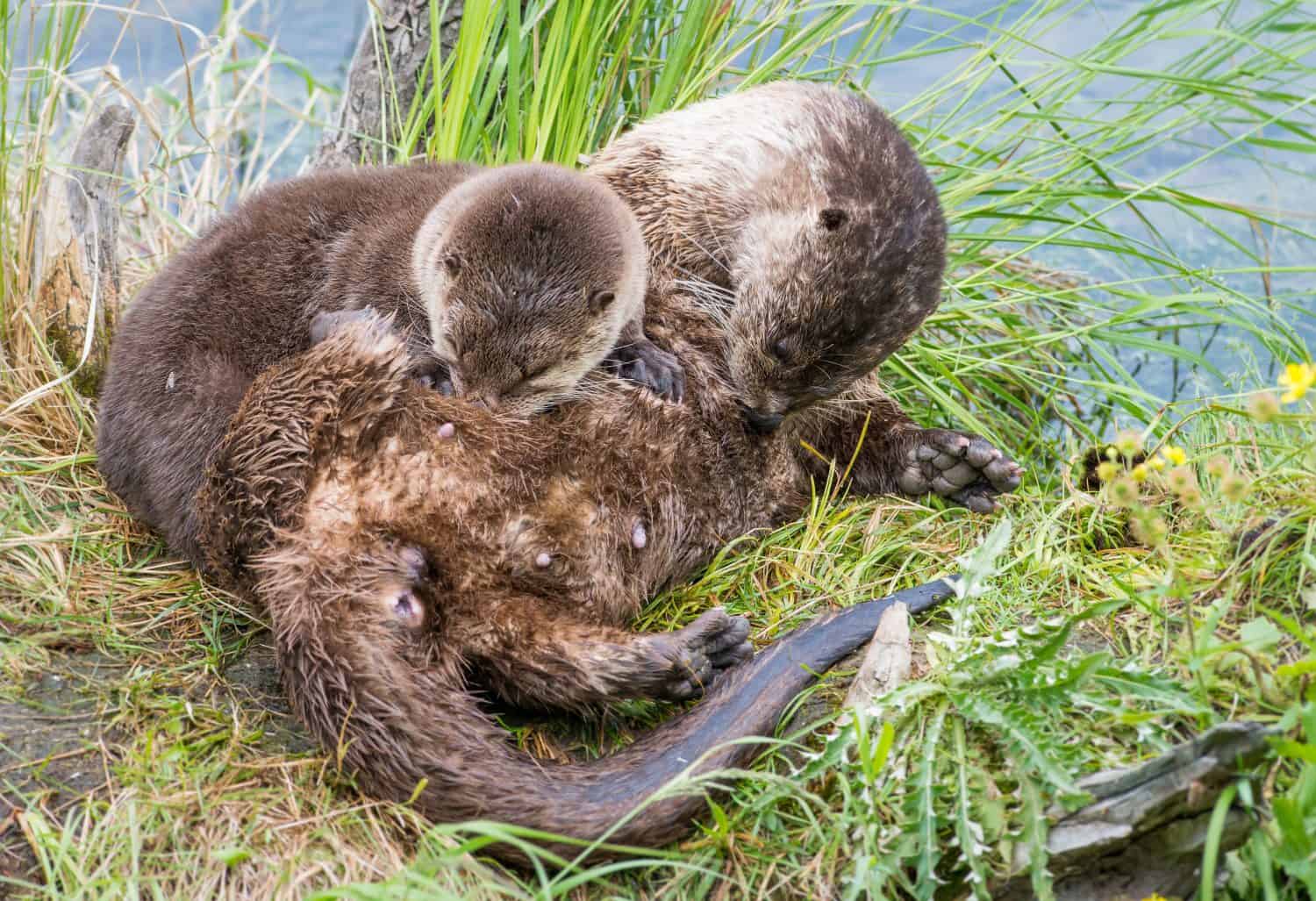
Adult female otters who have lactated at least once will have visible mammary glands on their abdomen, such as seen on this nursing mother.
©Ghost Bear/Shutterstock.com
As mammals, mother otters provide milk for the young. In most otter species, adult females have two pairs of visible nipples. One exception is the sea otter (Enhydra lutris), which only has a single pair of teats (as they usually only have a single pup). Male otters, on the other hand, have a visible scrotum. Of course, these parts are on the underside and are thus generally only visible if the otter is on their side or standing up.
3. Latrine Habits: Pee and Poop

Adult male otters have a visible scrotum rather than nipples.
©Colin Carter/Shutterstock.com
An interesting method for telling adult male and female otters apart could be to observe their latrine habits. The San Diego Zoo confirms this method works well for sexing giant otters (Pteronura brasiliensis), noting that in the male otters, there is a larger gap between the urine and fecal streams, and they often bisect. In contrast, females have a smaller gap between these streams, and they often stay parallel. Given that the males and females of all otter species are similarly equipped, this difference is likely observable in them as well.
4. Parental Care: Moms and Dads
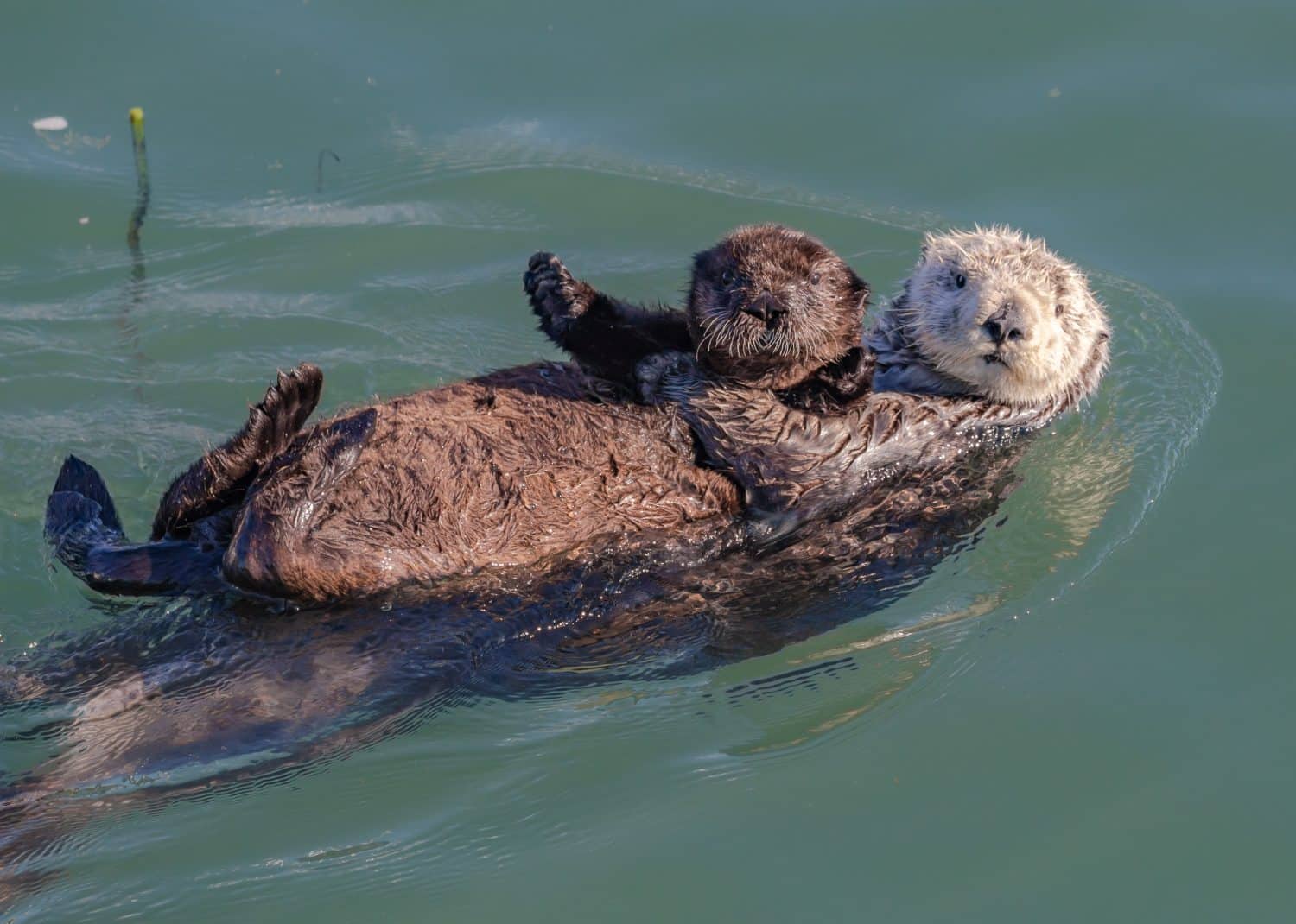
The sea otter is one species where you can be sure an adult with a pup is the mom!
©MODpix/Shutterstock.com
In the majority of otter species, parental care is provided solely by the female. However, there are a few species where both parents rear the pups together, such as the giant otter. Still, even in these species, nursing is conducted solely by the female.
Conclusion
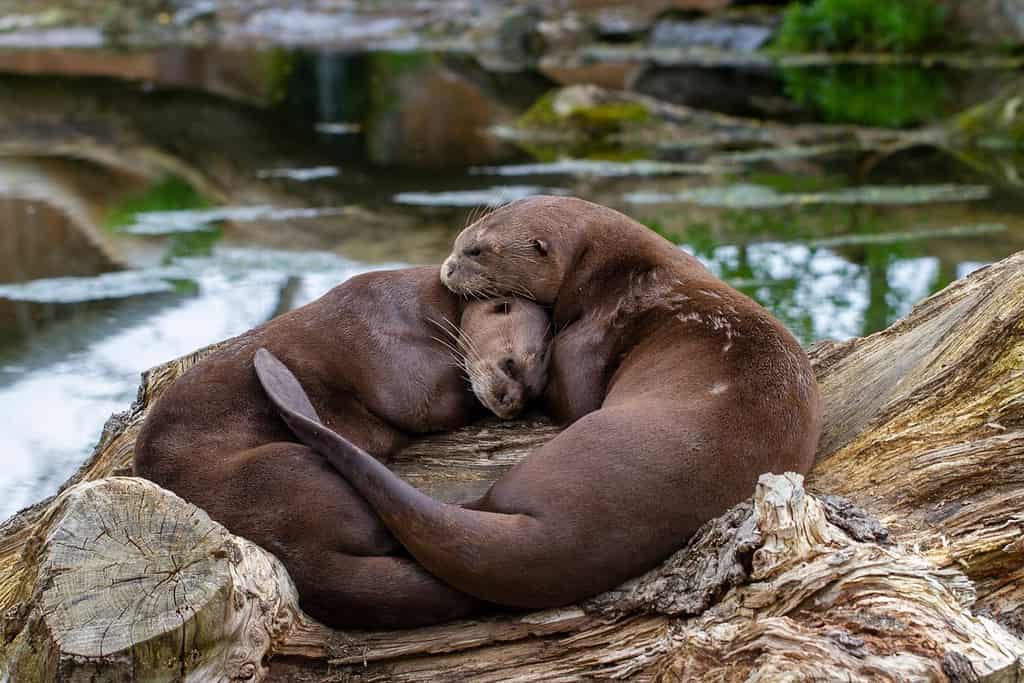
Unlike the majority of otter species, giant otters form strong pair bonds and raise families together.
©GoWildPhotography/Shutterstock.com
When it comes to otters, it can often be difficult to tell males and females apart because there is no significant sexual dimorphism, with both sexes sporting identical coats and similar overall body shapes. Males may be a bit larger than heavier than females on average, but this varies between individuals. Other more reliable ways to tell the sexes apart include catching a glimpse of what parts are on their undersides (teats or testes), watching how they pee and poo, and seeing who is taking care of the pups and how.
Summary of Male vs Female Otters: 4 Key Differences
| Trait | Difference | Notes |
|---|---|---|
| Size | males are a bit longer/heavier on average | most species |
| Visible Reproductive Parts | teats on females (usually two pairs), testes on males | all species (female sea otters have one pair of teats) |
| Latrine Habit | males have a larger gap between & bisection of urine & fecal streams | studied in giant otters, likely true for all species based on similar anatomy |
| Parental Care | females care for pups | most species; only a few in which males participate in pup rearing; females always nurse |
The photo featured at the top of this post is © heyrabbiticons, Stevebidmead from pixabay/ via Canva.com
Thank you for reading! Have some feedback for us? Contact the AZ Animals editorial team.




